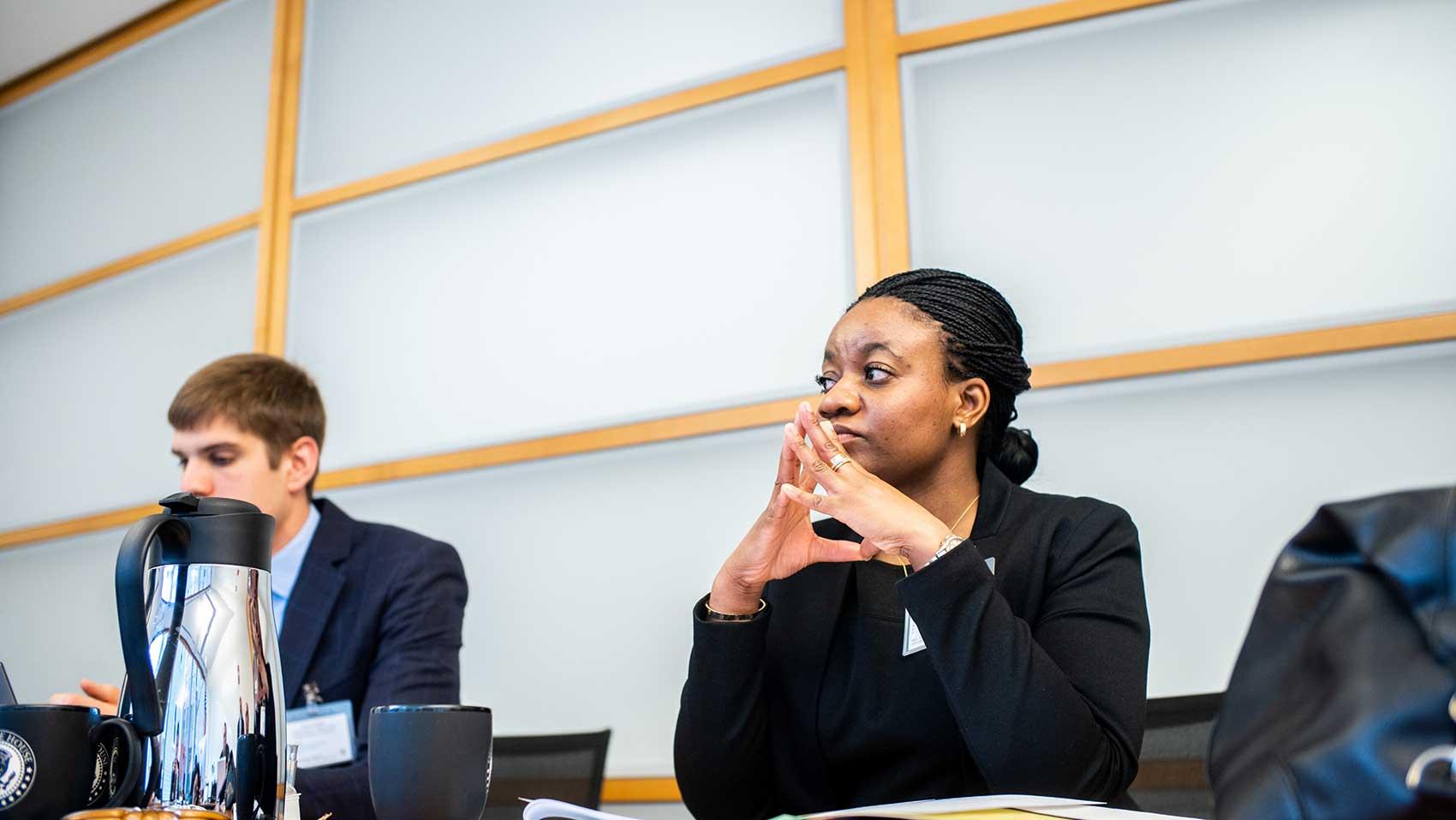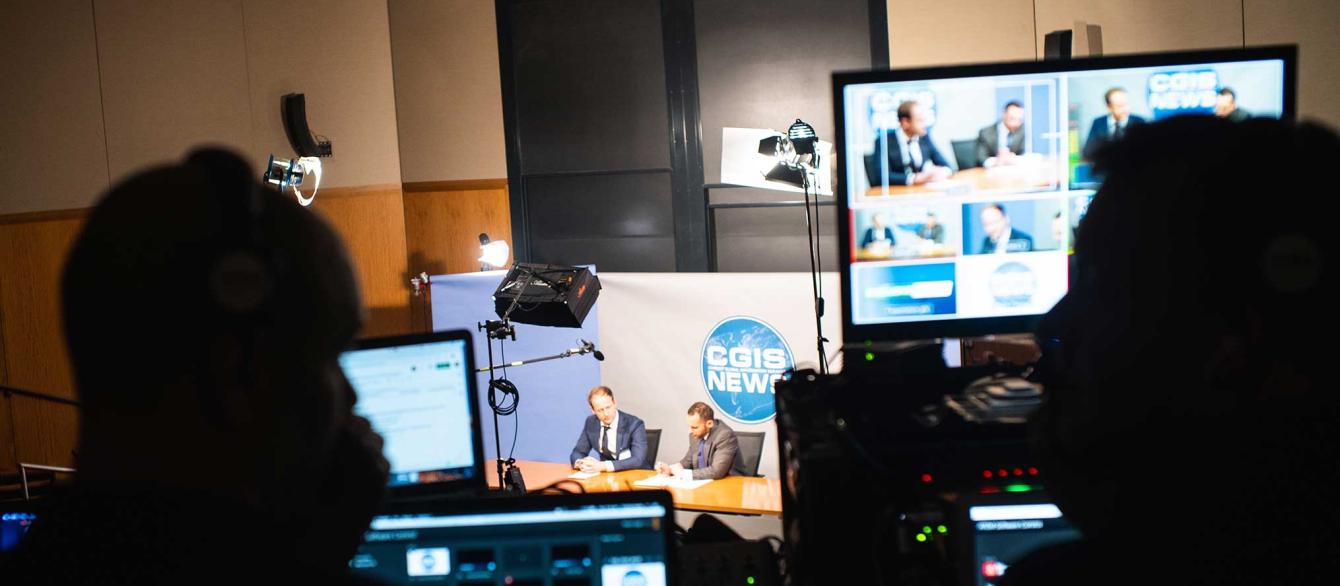Following reports of the use of chemical attacks in Syria in August 2013, former President Barack Obama was faced with a decision. How should the United States respond?
On one hand was the potential of another unpopular involvement in the Middle East. On the other, his own commitment to the “red line” regarding the use of such weapons—a line Assad had now crossed. The Situation Room was tense as leaders walked a tightrope between war and peace. A clear path forward was elusive.
Obama’s dilemma reflects the reality of decision-making in crises of statecraft. Leaders are faced with decisions that span multiple issue areas and are shaped by both larger historical context and previous personal interactions.
Yet diplomats and officers are often trained to study problems in isolation, bounded by a clear beginning and end, focused on one issue. Without integrating the chaos and characteristic uncertainty of real-world crises, exercises in decision-making remain incomplete. The question is then: how do we replicate the complexity that top leaders must contend with to better prepare future decision-makers?
The Negotiation Task Force’s Red Horizon project set out to tackle this question. Senior designers Arvid Bell and Alexander Bollfrass explain the scope of their team’s mission in a new article for International Studies Perspectives:
“Over the course of a year, a team of seventeen simulation designers, case writers, and other research affiliates analyzed the political decision-making structures of the United States, China, Russia, and other relevant actors and converted these assessments into simulation models. For the testing and delivery phase of the exercise itself, the project hired an additional thirty ‘wargame specialists’ to manage the technical components of the exercise as well as the immersive environment. The Red Horizon project culminated in the inaugural run of the exercise itself, a three-day event with more than 100 participants and staff members in attendance in 2018. The 2019 iteration of Red Horizon drew on similar resources, as did 2020’s virtual event.”

Gloria Ayee (right) in the role of U.S. president with her chief of staff, Patrick Deem, in a cabinet meeting during Red Horizon 2019.
Bell, Bollfrass, and their team developed what they call “3-D crisis exercises.” Designed to capture the dynamism, depth, and decentralization of real-world crises, these exercises move beyond the established methods of wargaming to better reflect the emotional and psychological realities of high-stakes, multi-faceted crises.
The struggle is to balance control of the scenario and realism. Many wargame setups include a feature known as the control cell, which modulates the scenario by evaluating and rejecting unrealistic moves. Yet excessive monitoring of participants’ moves can hinder the natural storytelling process that contributes to effective suspension of disbelief. It also limits the realism of outcomes by constraining participants’ choices rather than allowing them to innovate.
Red Horizon faces these challenges head on. Conducted annually since 2018 at Harvard University, it reflects NTF’s mission to push the boundaries of what is possible in immersive negotiation training. Thrown into Red Horizon, participants such as political and military officials, scholars, and exceptionally qualified students find themselves immersed in a conflict escalation on the Korean peninsula.
The approximately seventy participants adopt roles as political, military and intelligence leaders from the United States, China, Russia, and NATO. In a scenario designed to mirror the real world, leaders are assisted by a team of staff members, participate in crisis meetings in situation rooms, may be interviewed by a professional news crew, and must travel on simulated “airplanes” to reach specific locations across the globe.
Over the course of the exercise, participants execute a variety of military actions that they monitor live on a screen displaying the placement of their units. They may also negotiate written agreements or pass UN resolutions.
Replicating real-life decision-making entails reproducing the mental and emotional complexities of crises. Humans, regardless of their position, process information and make decisions differently under stress.
As an immersive crisis exercise, Red Horizon is designed to reflect the nature of interconnected statecraft challenges in the 21st century. Faced with both military and diplomatic decision-making, participants must navigate the role of hierarchies, organizational cultures, and political systems.
Most importantly, Red Horizon functions without the rigidity of the control cell. Over the course of the exercise, participants face situations of their own making, without being checked by the cell. This prevents the crisis exercise from becoming sterile, shallow, or overly centralized—instead, it is characterized by “reality, fast pace, [and] geopolitical complexity,” according to one 2020 participant.
This is the 3D design model in a nutshell:
Dynamic
Bell and Bollfrass argue that “‘dynamic’ is often a vacuous buzzword.” They propose to “use it intentionally to describe an immersive learning environment with specific characteristics.” Rather than executing moves in phases that must be submitted to the control cell, participants in Red Horizon can, and do, make decisions at any moment.
The ebb and flow of action allows participants to formulate strategies themselves rather than selecting from predetermined options. Pressure within the simulation arises from their opponents’, and their own, choices, due to the “ambiguity and autonomy allowed to each individual actor,” noted a 2020 official. A 2019 participant described this aspect of the wargame as reflecting the “dynamic nature of human decision-making.”
Deep
Replicating real-life decision-making entails reproducing the mental and emotional complexities of crises. Humans, regardless of their position, process information and make decisions differently under stress. To recreate the emotional depth of such environments, participants are richly motivated and immersed in character.
Red Horizon participants receive detailed background memoranda, with a mix of political, organizational, and personal goals. Positions help to mirror the organizational structures that affect interpersonal dynamics. Previous participants attest to tensions between civilian or military groups and frustrations with bureaucratic complexities.
“Interpersonal and communications issues were so realistic, I had to question whether they were organic or part of the role-playing scenario,” said a participant in the 2019 session. “I think simultaneously trying to negotiate through and around those situations and the scenario elements could not be any closer to the challenges of real life.”
Such complexities contribute to the emotional stress of decision-making, with one participant reporting, “I feel like I’m playing 4D chess and losing badly.”
Decentralized
Without the control cell, Red Horizon allows the scenario to be shaped by the consequences of participants’ own choices. This helps reveal the scenario’s emergent properties—the phenomenon in which the behavior of a complex system displays patterns of behavior different from that of the sum of its parts. Past Red Horizon iterations have included unexpected use of resources, such as Russian intelligence hacking of U.S. emails, that demonstrate the flexibility and innovation possible without the control cell.
Decentralization also allows events to unfold naturally and reveals the danger of losing sight of the overall strategic picture with multiple situations unfolding at once. In the words of one 2019 participant, “with so many moving parts around Libya, Xinjian, South Africa, etc., the main issues got lost in the weeds.” This created an atmosphere deemed “very close to reality in terms of uncertainty and multiple simultaneous events,” according to a 2018 participant.
The success of Red Horizon reflects the advantages of designing a wargame scenario without the control cell to create a more natural progression of events. As a 2019 participant attested, “There were layers of negotiation lessons that were powerfully taught just by virtue of being part of the exercise.”
The 3-D approach creates exiting opportunities for future research. Most importantly, its ability to more accurately train practitioners to function in an uncertain environment will leave them better equipped for future high-stakes decisions. Should they find themselves in the Situation Room, they will know what to do.
To learn more about the methodology behind Red Horizon, see: Arvid Bell, Alexander Bollfrass, To Hell with the Cell: The Case for Immersive Statecraft Education, International Studies Perspectives, 10 June 2021.






